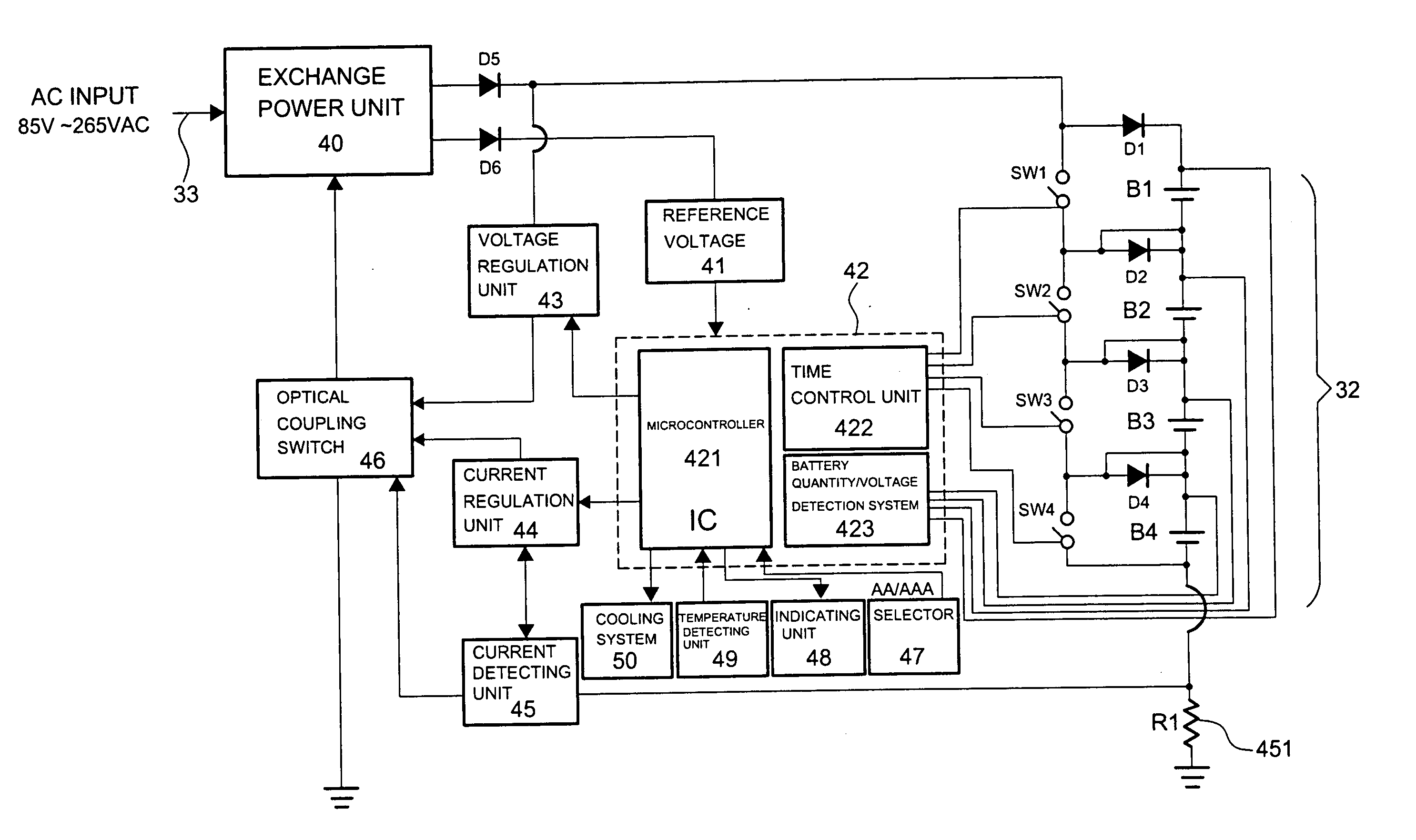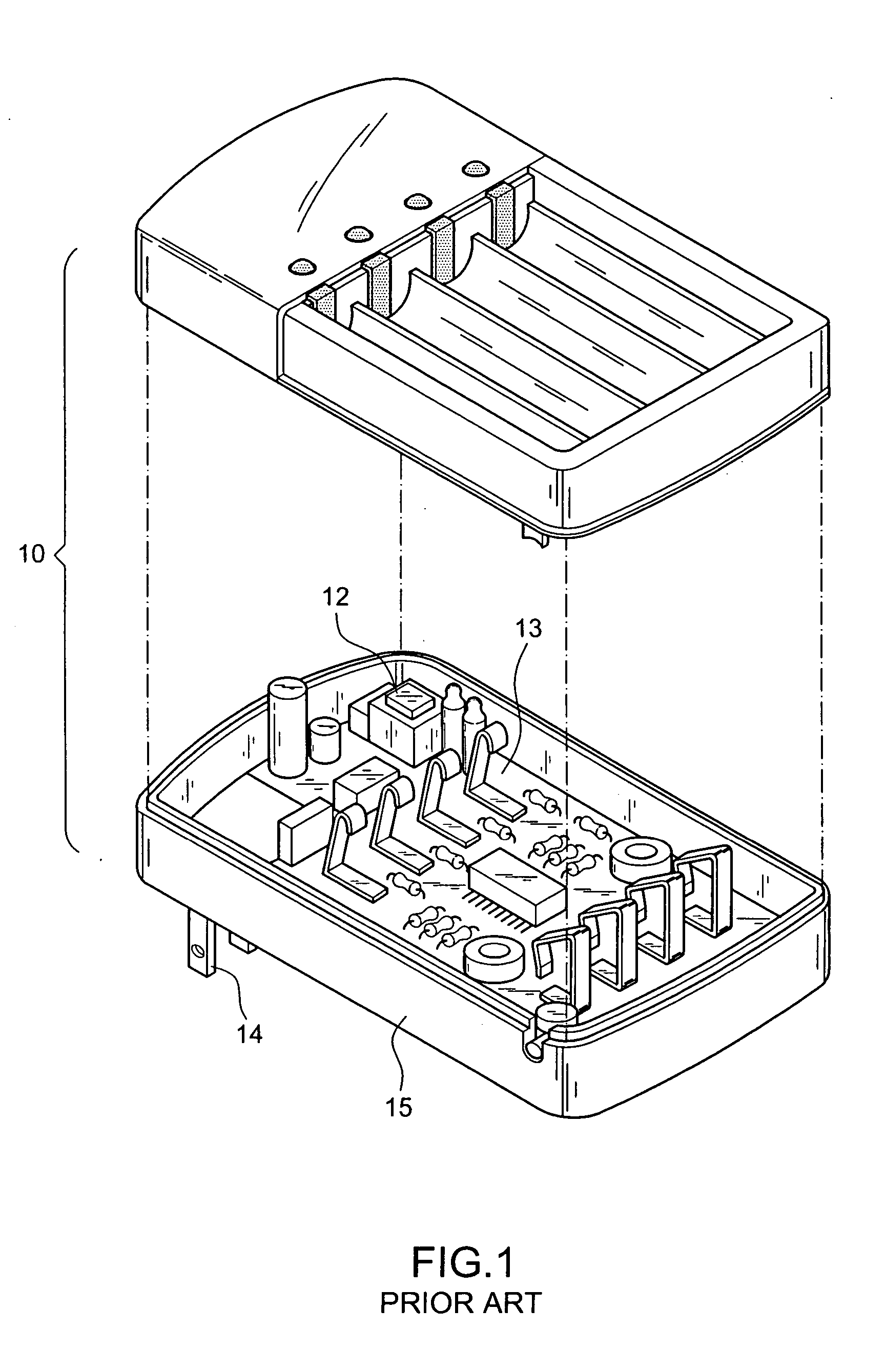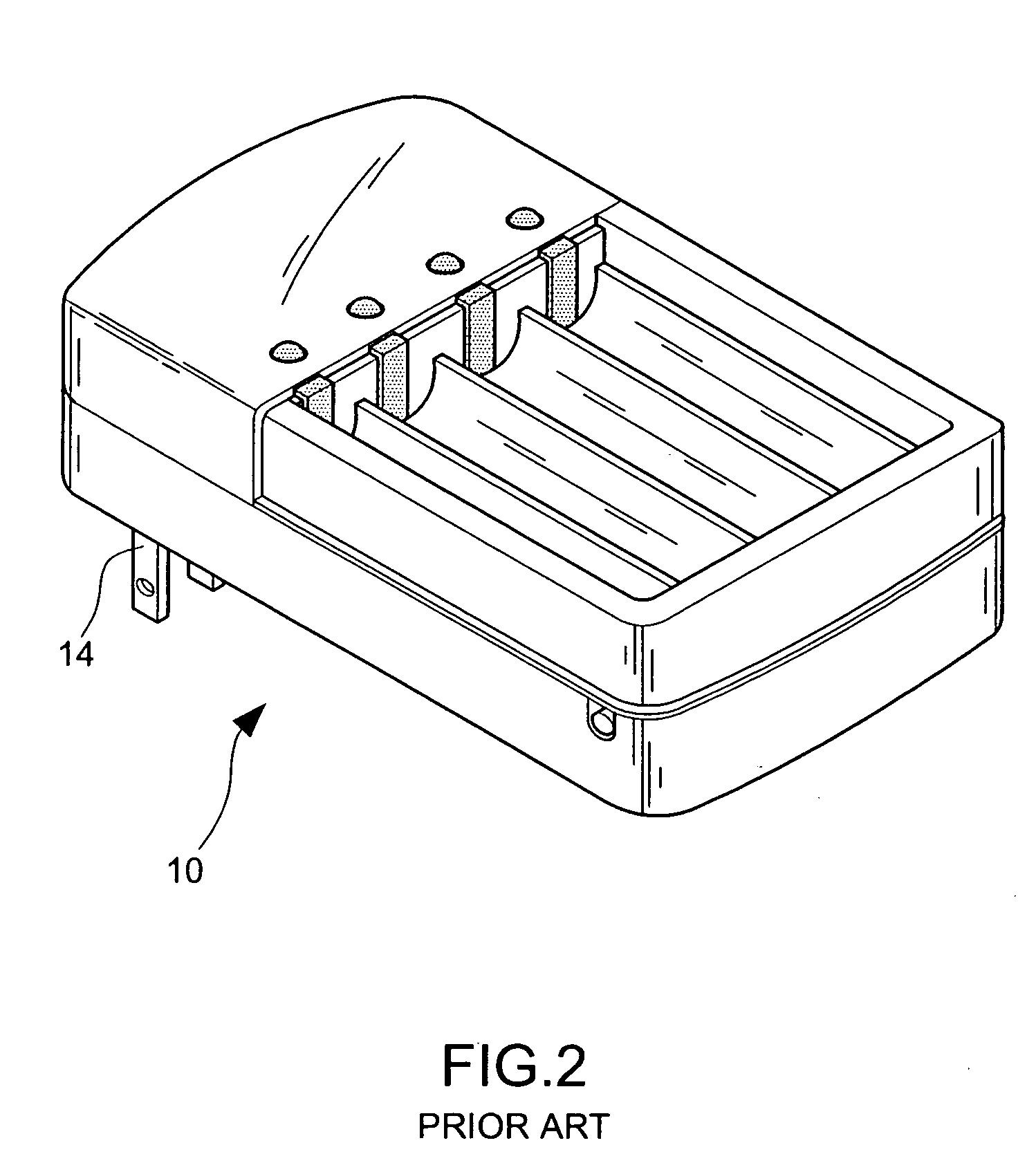Serial charger with the function of automatic change of charging speed for NICD/NIH batteries
a technology of automatic change and charger, which is applied in the direction of indicating/monitoring circuit, transportation and packaging, and the arrangement of several simultaneous batteries, etc., and can solve the problems of increased operation cost, pollution of environment, and inability to meet the requirements of instant charging process
- Summary
- Abstract
- Description
- Claims
- Application Information
AI Technical Summary
Benefits of technology
Problems solved by technology
Method used
Image
Examples
second embodiment
[0045] The four-speed charging mode has been described above. However, only two batteries are required in many cases. Hence, the invention, which is shown in FIG. 11, employs the two-speed charging mode. At first, the battery number will be detected. When the battery number is less than two, the charging will be shifted into speedy charging process. And when the battery number is more than two, the charging will be shifted into normal charging. However, either in speedy charging status or in the normal charging status, the charging process will stop when the batteries are fully charged. The charging voltage and current change of two-speed charging process are shown in FIG. 12. That is to say, when three to four batteries are charged, the charging voltage is 8V, the charging current is 2 A and the finished charging time is 60 minutes. This is the normal charging process. When only one battery or two batteries are charged, the charging voltage will be reduced and the charging current ...
third embodiment
[0046] The charging circuit of the invention is shown in FIG. 14. The main structure is similar to the previous embodiments. The difference is that it has two charging grooves 32 in which the two batteries A1, A2 are connected in series, and the other two batteries B1, B2 are connected in series, then two sets are connected in parallel to form a first charging loop 52 and a second charging loop 53. As in the previous embodiments, the batteries A1, A2, B1, and B2 are also connected with a switch SW1-SW4, respectively. A unilateral electronic element D1-D4 is interposed between each switch and the positive terminal of each battery. Another difference lies in that, the direct current coming from the exchange power source 40 forms by control of a current partition unit 51 a first charging current A and a second charging current 11, which flow to the first charging circuit 52 and the second charging unit 53 respectively. The charging control device 42 commands the current partition unit ...
PUM
 Login to View More
Login to View More Abstract
Description
Claims
Application Information
 Login to View More
Login to View More - R&D
- Intellectual Property
- Life Sciences
- Materials
- Tech Scout
- Unparalleled Data Quality
- Higher Quality Content
- 60% Fewer Hallucinations
Browse by: Latest US Patents, China's latest patents, Technical Efficacy Thesaurus, Application Domain, Technology Topic, Popular Technical Reports.
© 2025 PatSnap. All rights reserved.Legal|Privacy policy|Modern Slavery Act Transparency Statement|Sitemap|About US| Contact US: help@patsnap.com



